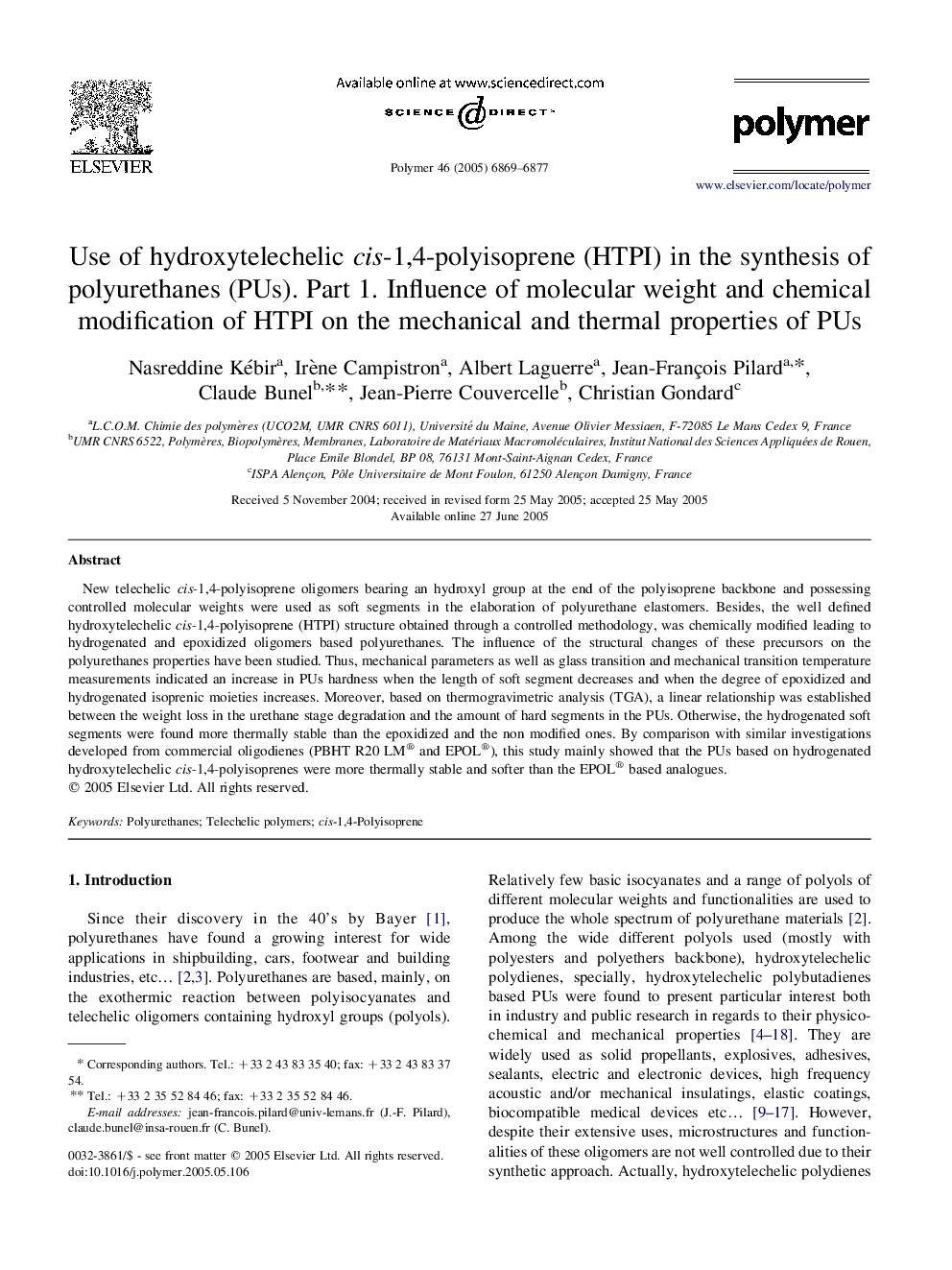| Article ID | Journal | Published Year | Pages | File Type |
|---|---|---|---|---|
| 5191183 | Polymer | 2005 | 9 Pages |
Abstract
New telechelic cis-1,4-polyisoprene oligomers bearing an hydroxyl group at the end of the polyisoprene backbone and possessing controlled molecular weights were used as soft segments in the elaboration of polyurethane elastomers. Besides, the well defined hydroxytelechelic cis-1,4-polyisoprene (HTPI) structure obtained through a controlled methodology, was chemically modified leading to hydrogenated and epoxidized oligomers based polyurethanes. The influence of the structural changes of these precursors on the polyurethanes properties have been studied. Thus, mechanical parameters as well as glass transition and mechanical transition temperature measurements indicated an increase in PUs hardness when the length of soft segment decreases and when the degree of epoxidized and hydrogenated isoprenic moieties increases. Moreover, based on thermogravimetric analysis (TGA), a linear relationship was established between the weight loss in the urethane stage degradation and the amount of hard segments in the PUs. Otherwise, the hydrogenated soft segments were found more thermally stable than the epoxidized and the non modified ones. By comparison with similar investigations developed from commercial oligodienes (PBHT R20 LM® and EPOL®), this study mainly showed that the PUs based on hydrogenated hydroxytelechelic cis-1,4-polyisoprenes were more thermally stable and softer than the EPOL® based analogues.
Related Topics
Physical Sciences and Engineering
Chemistry
Organic Chemistry
Authors
Nasreddine Kébir, Irène Campistron, Albert Laguerre, Jean-François Pilard, Claude Bunel, Jean-Pierre Couvercelle, Christian Gondard,
